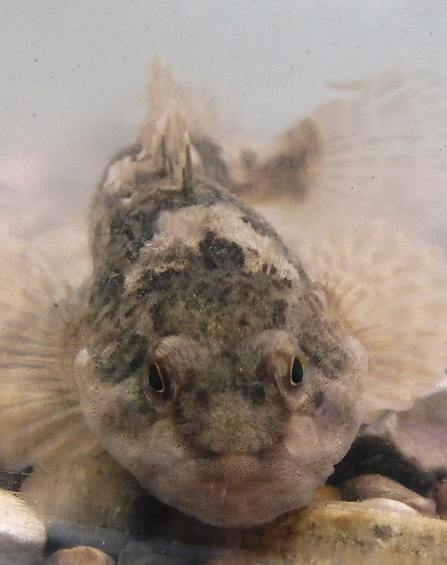My favourite fish [yes, I have a favourite fish] is superbly camouflaged against the pebbles and stones in mottled browns and flecks of grey.
As my eyes become accustomed to this underwater world, life shows itself. First a grey flick of a tail and a freshwater shrimp dashes into a patch of weed, disturbing a torpedo shaped aquatic beetle, which whizzed downstream past my leg. More subtle movements, almost imperceptible at first, but definite motion - the stones are moving.... These are the temporary homes, constructed by caddis fly larvae, whose fleshy bodies needs protection from predators; each grain of sand or miniscule pebble glued together by the incumbent, creating a tube-shaped tunnel to live in, before the larvae metamorphoses into an adult fly, out on the water's edge.


